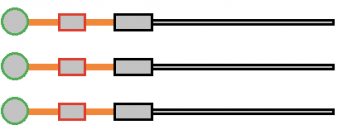While
@Blitzo may be keen to posit that 003
is not even the final form of what the PLAN may envision for their serial-production ready 100,000 ton nuclear variant that is expected to centre around a 3-lift + 4-cat config so as to bring it on par with the 'benchmark' as established by the Ford-class, and I'd be ready to agree that he's most likely correct, I think it's also worth bearing in mind the USN has spent over six decades (and counting) of designing, building and operating nuclear carriers with 4 lifts (longer still if we were to start from the advent of 'supercarriers' that began with the Forrestals), which had long been accepted as an well-optimised layout for a US supercarrier... until the Ford came along with her 3 lifts.
Naturally the question becomes: "Was the 4th lift superfluous all along?"
And naturally the justification becomes: "The flight deck has been 'optimised' by the 3 lifts."
If after more than 60 years of operating CVNs the Navy can still find a reason to delete a major feature like a 4,400 sq. ft and 120 ton elevator in order to 'optimise' a supercarrier in serial-production for over 50 years, what else can they add or omit? What capability has the boat gained/lost from doing so? Can the Navy then claim there isn't room for improvement still?
I would think if one were to entertain the notion of a 'gold standard' in lift/catapult numbers and placements, the Ford-class may have a couple more decades yet to go before it can confidently claim its design is representative of what an "optimised" 100,000 tonner should look like.
So I'm of the opinion the PLAN will no doubt look to the vast experience of the US carrier programme as accrued by the trials and tribulations over many decades to inform their own approach to designing carriers that are best suited
for China, for threat environments that are
unique to China, as opposed to pursuing some sort of a vain goal of building analogues to 100,000 ton class US supercarriers for a reason as simple as: "American supercarriers are heretofore peerless, state-of-the-art and best-in-class, so a Chinese Ford is what China should build".
We can all debate the pros and cons of 2 lifts vs 3, or 3 cats vs 4. At the end of the day only the PLAN knows if they're actually giving up capabilities or not.
All that is not to say the PLAN
shouldn't emulate the USN where it makes sense to. The next Chinese CV, be it another 003-pattern or a nuclear kind, could as well have an additional lift and catapult if the PLAN judges it advantageous to have them, and I would have no issue accepting the 003 as configured was a result of give-and-take for the PLAN, itself a process that was governed and limited by understandings and compromises from a time well before the first steel was cut over 6 years ago, before 002 was even launched.
Or, the next CV could as well retain a similar 3 cats + 2 lifts layout to 003, perhaps with appropriate positioning on an expected larger deck with a re-positioned island if nuclear, and personally I wouldn't be so surprised with it either.


